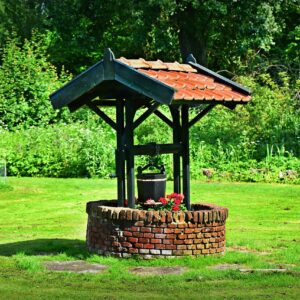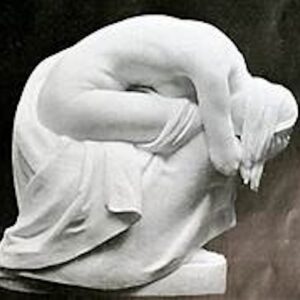We recently spoke with poet Karen An-hwei Lee about her new Slant book, Rose is a Verb
This poetry collection weaves aspects of the natural landscape of the California coast, flying rivers, the vanishing of bees, dialogues between a “sage” and a “stranger,” and a love for gardens. What was the inspiration behind this sequence of lyric poems?
The genesis of Rose is a Verb began as notes on twelve questions I designed as poetry exercises for a workshop I taught at the Glen Workshop in Santa Fe, New Mexico, sponsored by Image. The notes gradually developed into micro-essays which morphed into poems—some of the original micro-essays appear in the second half of the book. With its cyclical nature imagery and motifs on happiness, I noticed parallels to Virgil’s The Georgics. Subsequently, I studied four translations of The Georgics—two e-texts (one translation in poetic stanzas, the other in prose), plus two print bilingual translations—intrigued by similarities between the Mediterranean setting in The Georgics and southern California, where I resided for more than two decades: olive groves, vineyards, the life of bees, agronomic sciences, catalogues of trees, soil chemistries, the sea coast, and unfortunately, the brushfires, to list some examples.
I contemplated the various historical events that have elapsed since Virgil wrote The Georgics, circa 29 BC—the crucifixion of Christ, advancements in agricultural technology and genetic engineering, nuclear warfare, the digital age, the axial precession of our earth’s rotational axis (influencing which star constellations we see in the sky), transportation (airplanes, trains, and cars vs. chariots, for instance) and vanishing bees—in contrast to the didactic tone of Virgil’s long poem infused with lessons, political allusions, omens, and of course, over two thousand verses in Latin hexameter. However, despite the inevitable changes over time, many social and environmental dangers persist to this day, including brushfires, war, and anthrax, whose infectious symptoms are detailed in Book III.
How does your book exist in parallel or counterpoint to Virgil’s The Georgics?
The four parts of my book echo the progression of Virgil’s The Georgics: Book I—agrarian labor like tilling the soil, weather signs and war omens; Book II on olive groves vs. vineyards (“The Vituperation of the Vines”), birth of trees; Book III on animal husbandry (veterinary care, procreation), cycles of life in nature; and finally, Book IV, a “bio-mythography” of bees. I also explore Virgil’s questions in The Georgics: What is the ultimate path to happiness? What is pleasure? What is a good life?
What are the twelve questions you assigned as exercises at the Glen West Workshop, which served as another structuring device for this book?
Here are the twelve questions.
- What is your love-offering today?
- What or who bears the light?
- What was not otherwise yesterday?
- What do you hold onto, even if it _____?
- What ordinary miracles arose today?
- Who are the antennae in your life?
- What cliff does prayer mount in your soul?
- Where are signs of divine vs. human creation?
- Which of the ordained days have you lived?
- What heart-questions are unaddressed?
- What is your conversation with God?
- What gift do you send into the world?
Two mysterious figures—a “sage” and a “stranger”—appear throughout the poems, often in dichotomous arrangements or in dialogue with one another. Are they symbols of opposing human desires or archetypes from classical mythology?
In the spaces between the poems, I heard a call-and-response echo of the “sage” and the “stranger,” and decided to include their conversations with a bit of imagery. I supposed that one might compare them to the dialogues of soul and body in the works of the seventeenth century Metaphysical poets, exploring the neo-Platonic seam between eternity and a soul’s yearning in its anguish of the flesh.
Part III is titled, “Unvanquished Asian Cities.” What is this about?
Book III of Virgil’s The Georgics alludes to “vanquished Asian cities.” Conversely, the line in my poem refers to “unvanquished Asian cities.” The list of “unvanquished Asian cities” is excerpted from a flight screen for a missing Asia Air Flight which departed from Surabaya, Indonesia for Singapore on December 28, 2014. Sections of Part III in Rose Is a Verb allude to the escalation of Asian xenophobia during the pandemic.
Throughout your poetic oeuvre, including some of your earlier collections like In Medias Res and Phyla of Joy, you use scientific terminology. What is “clonal micropropagation,” for instance, mentioned in Part IV, “A Biomythography of Vanishing Bees”?
The clonal micropropagation of a Siberian campion flower is described in the article, “Dead for 32,000 Years, an Arctic Plant Is Revived,” by Nicholas Wade, which appeared in The New York Times on February 20, 2012. The frozen cells of a thirty-two thousand year-old campion flower were excavated from tundra permafrost, then cloned and micropropagated in vitro. Imagine you’re frozen for 32,000 years in the tundra and come back to life!
What does “bugonia” mean? Are you referring to a “begonia,” the flower?
No, not the flower. “Bugonia” refers to the bio-mythological regeneration of bees from an ox carcass, as mentioned in Book IV of The Georgics. Incidentally, this phenomenon also occurs in Judges 14:8-9, when Samson takes honey from a swarm of bees in a lion’s carcass. Of course, we know now that bees might build their hives in a carcass, but there is no scientific evidence for their spontaneous generation.
Other than Virgil, what are some of literary influences on this book?
Here’s a handful of literary influences—the exquisite cosmos of Arthur Sze, the abstract precision of Mei-mei Berssenbrugge, the distilled ecstasy of Emily Dickinson, the exile of Czeslaw Milosz, the modern devotional sensibility of Denise Levertov, and the ancient Poetry and Wisdom Books of the Old Testament, including the Psalms, Proverbs, Job, and Ecclesiastes.
What do you hope readers might glean from this book, even if they’ve never read Virgil?
Our earthbound journey of life in this fallen world is riddled with beauty and danger—part of the beauty is a glimpse of the afterlife, thanks to the gift of salvation through Christ’s sacrifice, once and for all time. As for danger, it needs no further explanation in our theodicy of moral and metaphysical frameworks. The musical cadences and imagery in this collection of poems aspire to convey a sense of hope and solace in the midst of sorrow. The poems, in this manner, embody language itself as a form of spiritual experience where we encounter God, where we receive divine revelation through the Word.
Finally, which poems or what lines are your favorite ones in the book?
Here’s a constellation of stanzas where the refrain, “rose is a verb,” appears—I’ve pulled these lines together from different portions of the book.
*
God, who is the original verbivore, tetragrammaton logophile, says to the stranger and sage alike— rose is a verb. * Rose is a verb which has arisen, or a hope made fragrant by holiness— God also suffered in the flesh: rose-colored, impaled and lacerated, bone-deep on a hill. Hold on, let go. * Rose is a body, rose is a corpus, and rose is a verb— What is your bread of fellowship? You and a loved one? A stranger? The body itself, a flesh-dome with the levity of birds? * Redemption in an expanding universe— Who, after lying in a tomb for three nights, rose? Rose.





